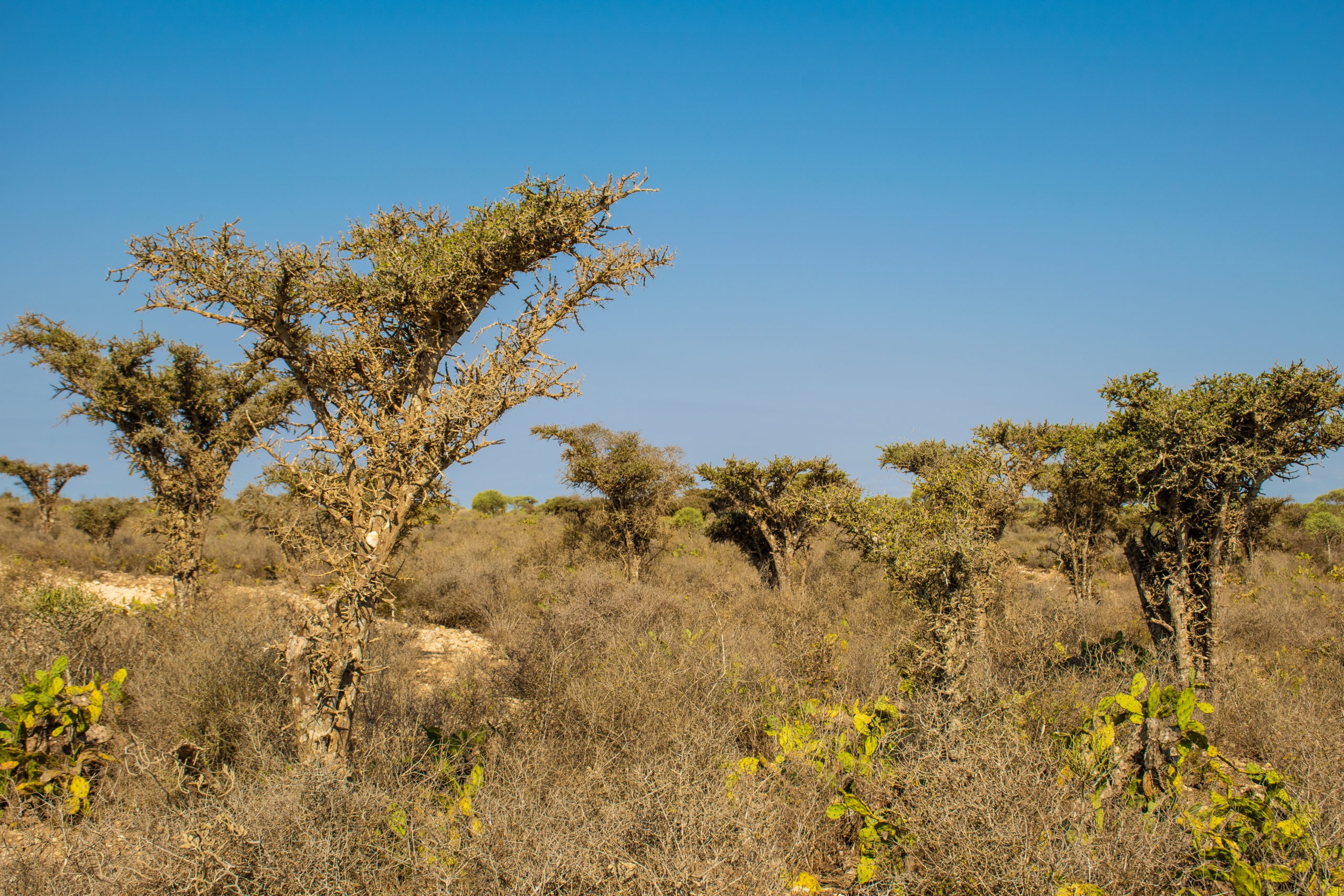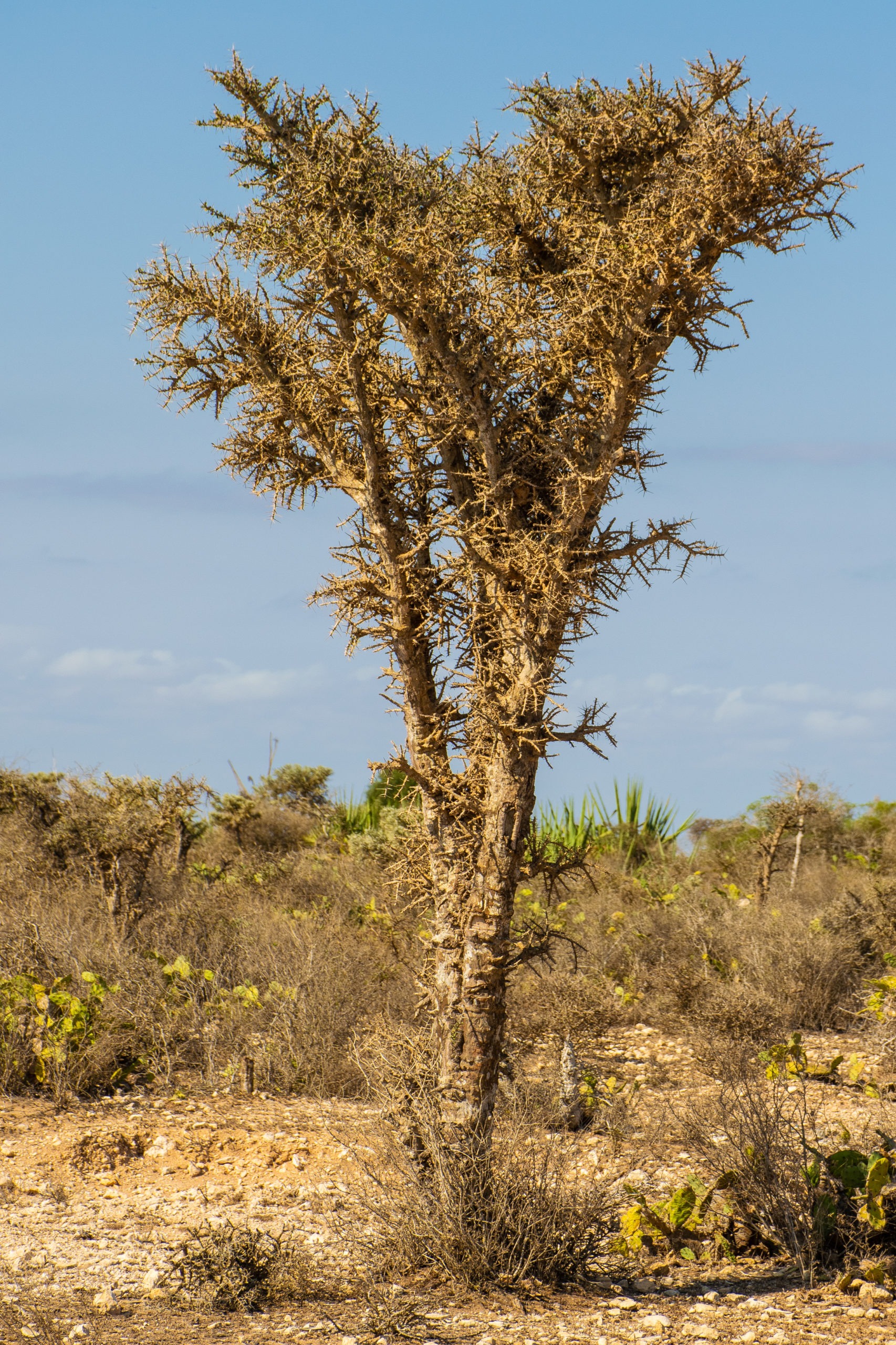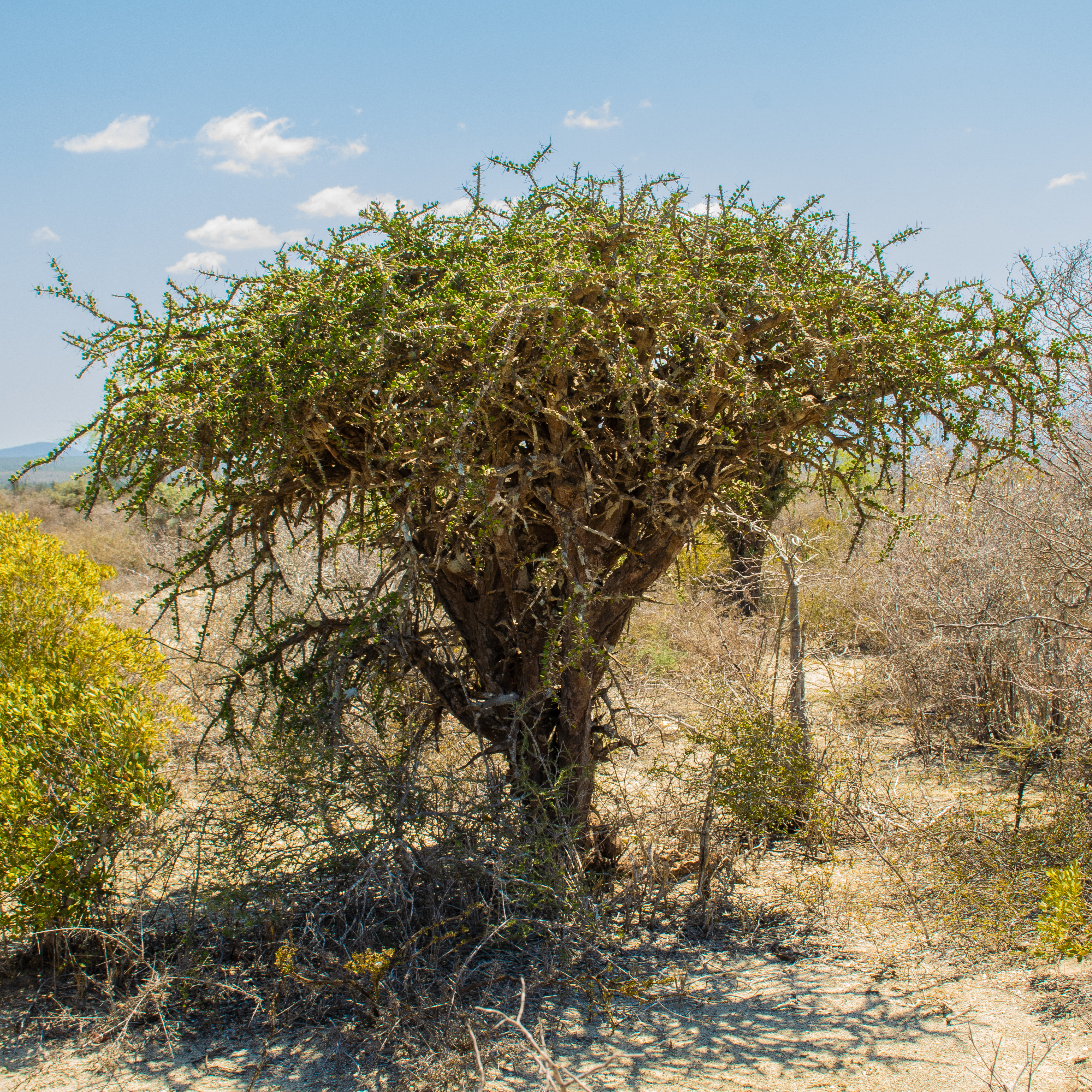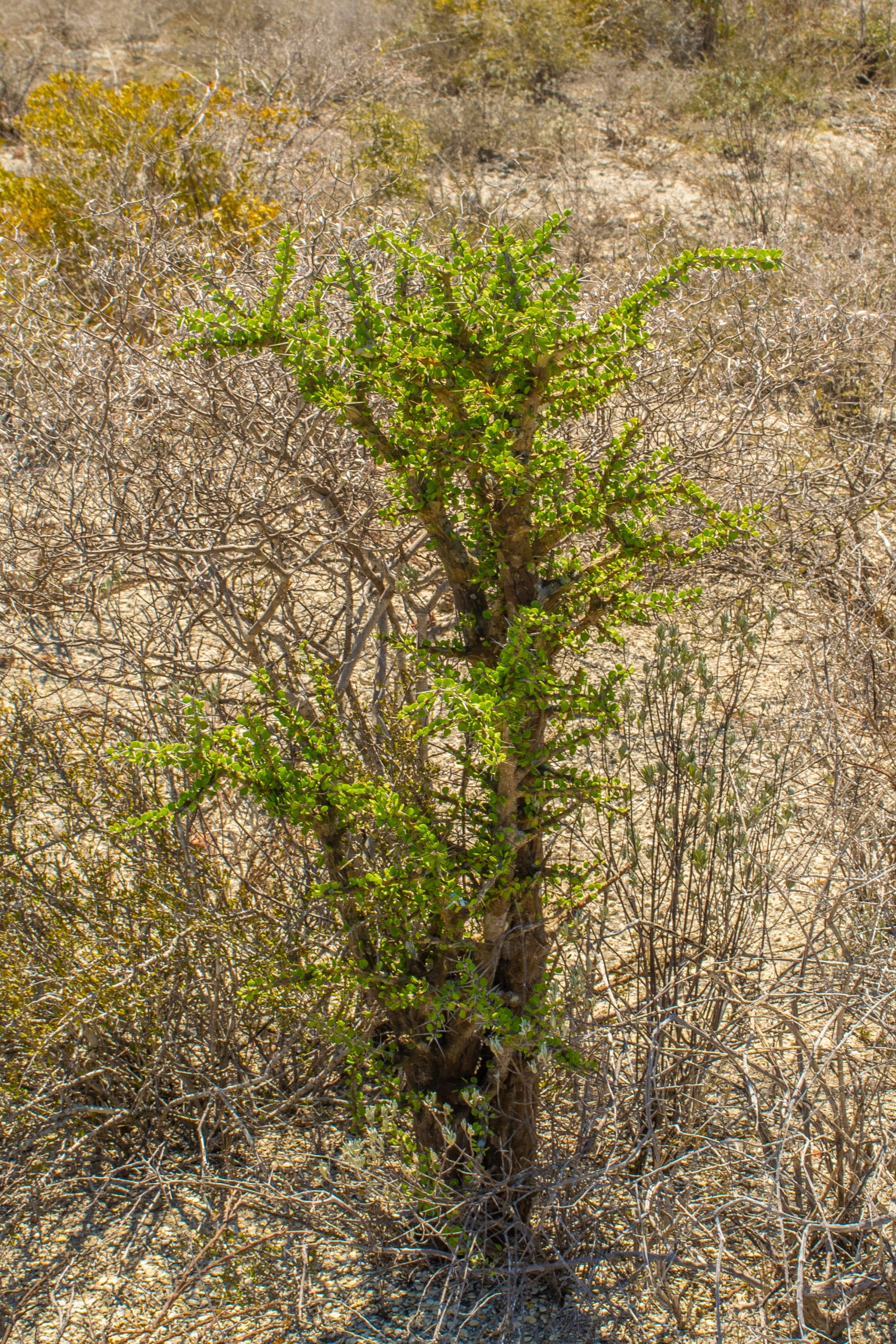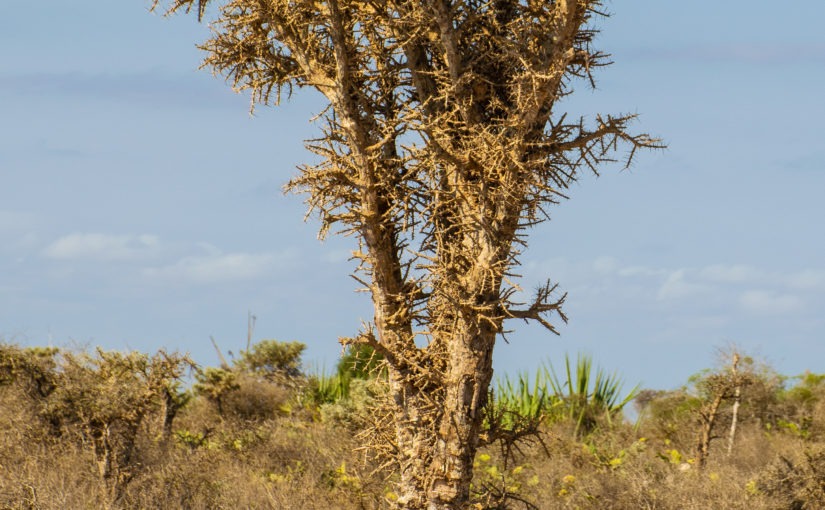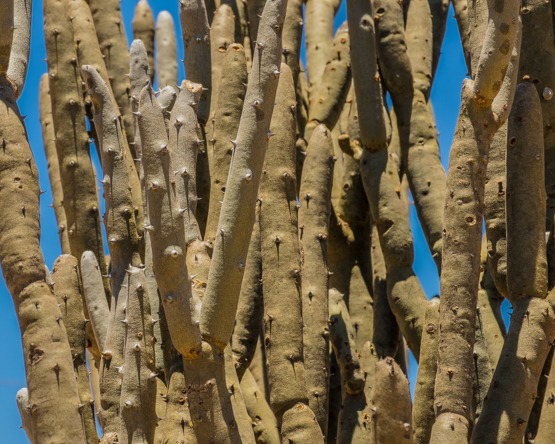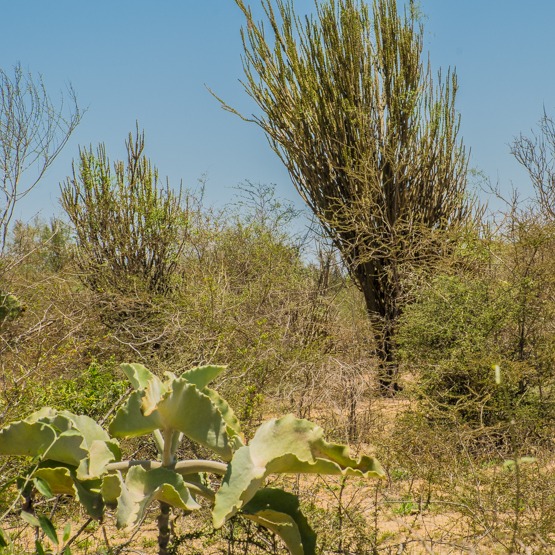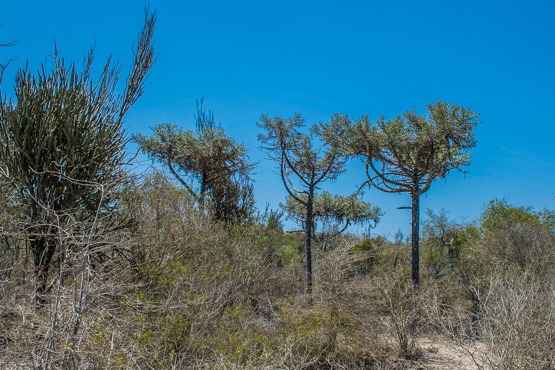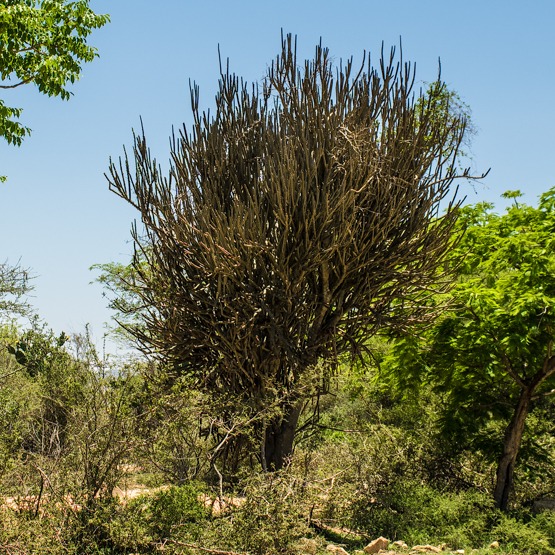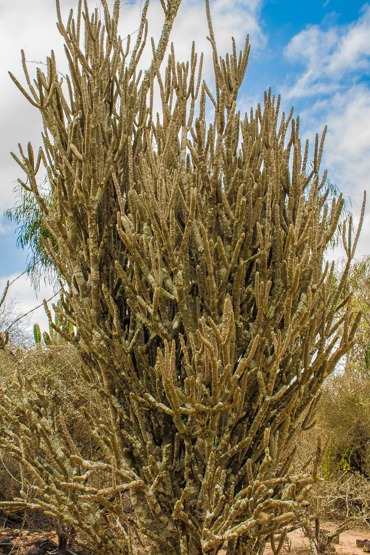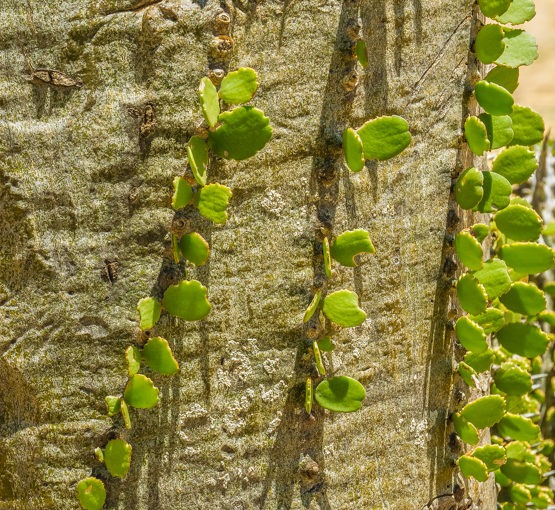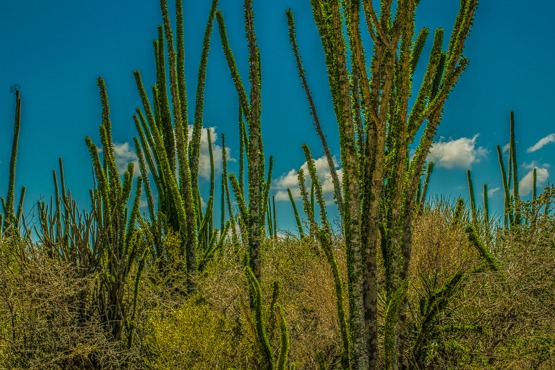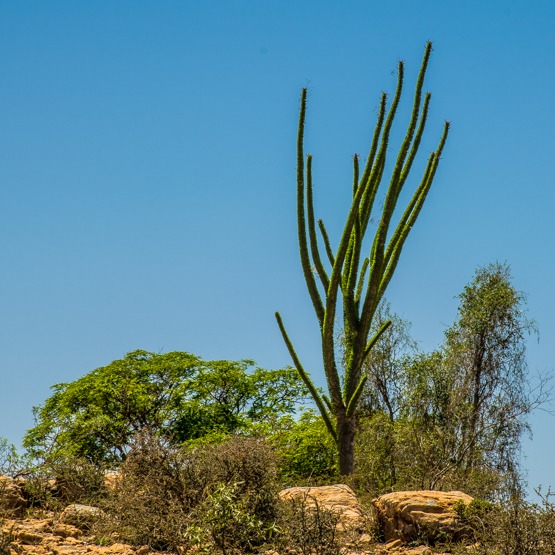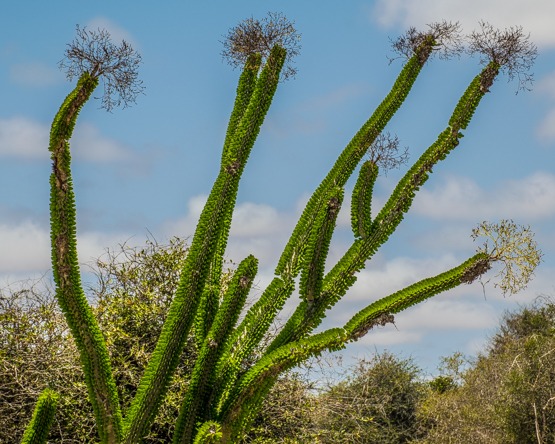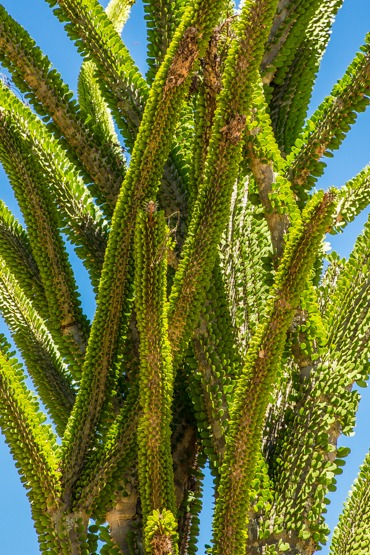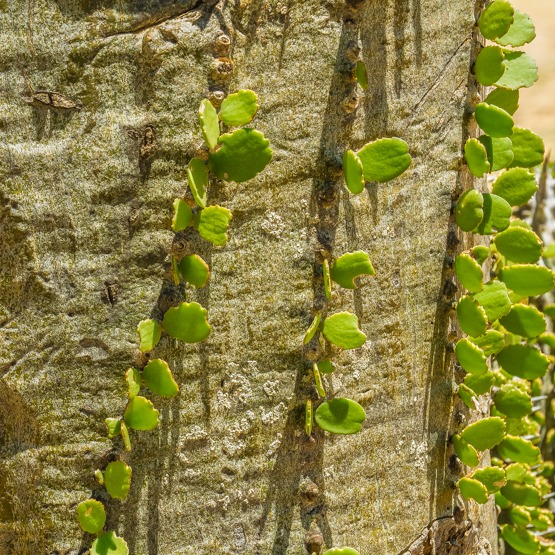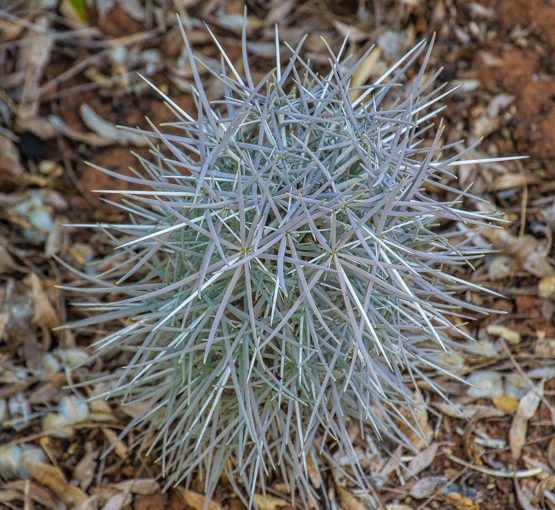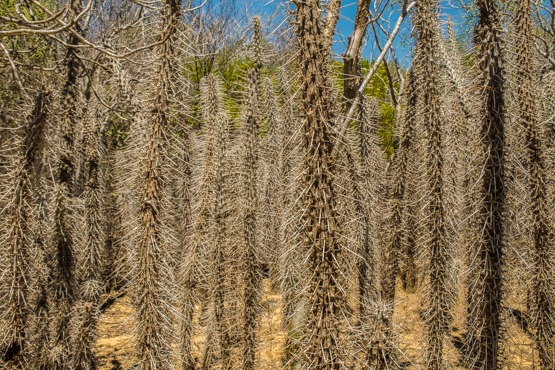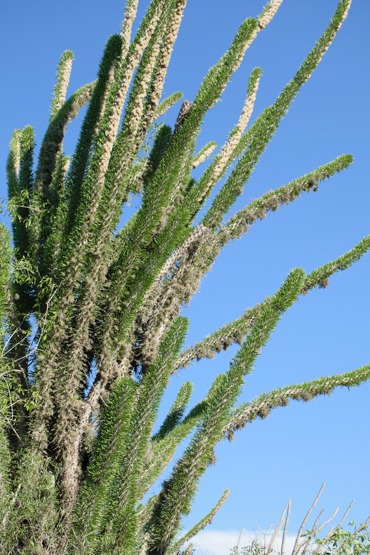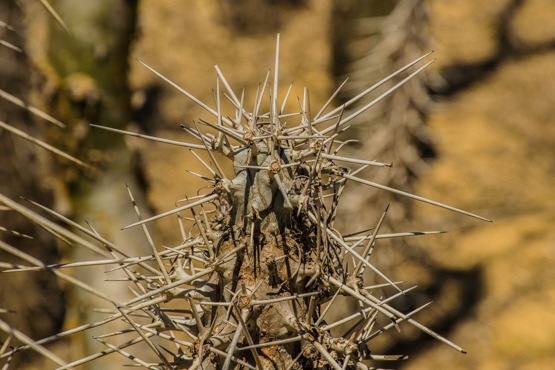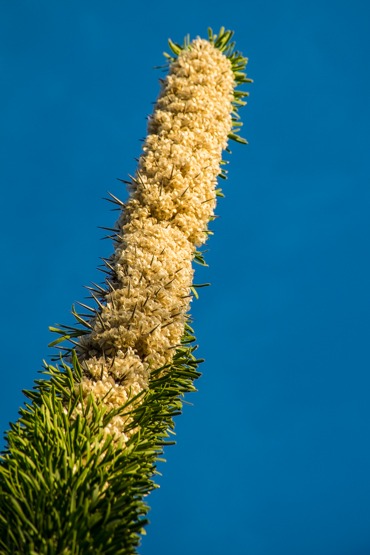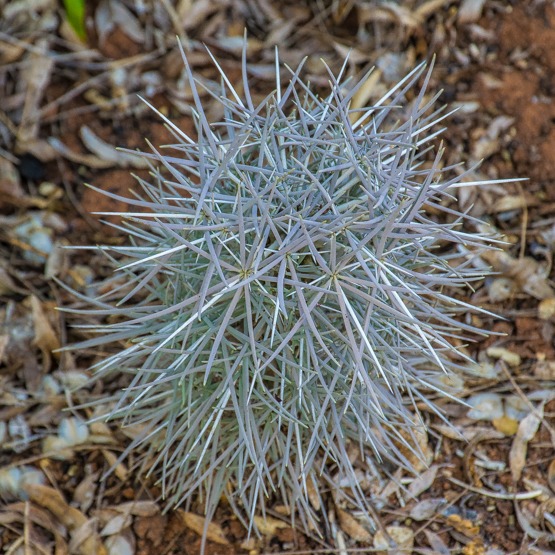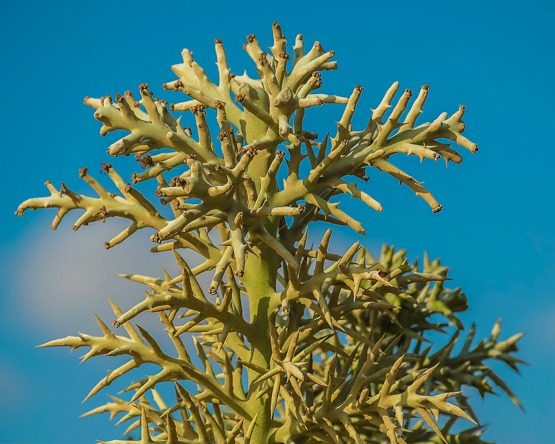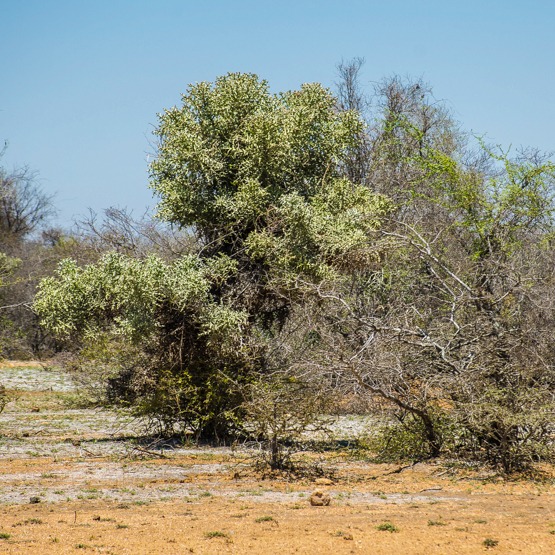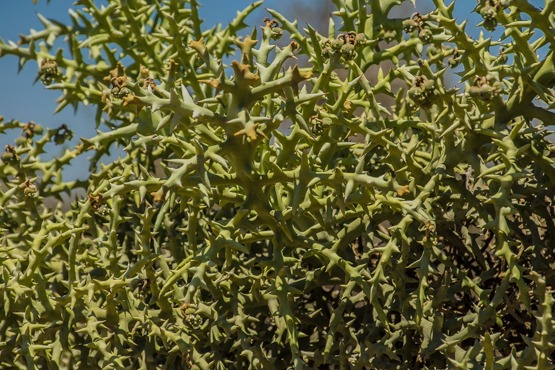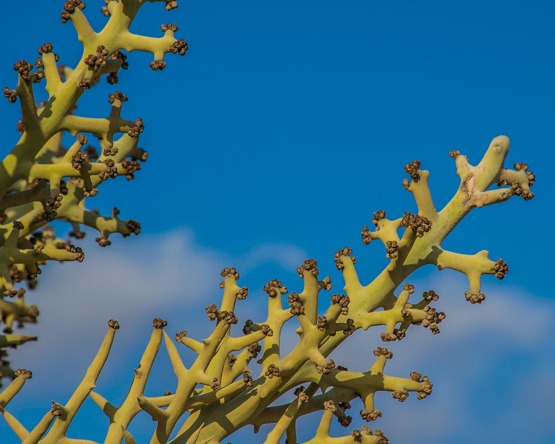Because of its typical habit, even young plants of this species are easily recognized. Over time, they will grow into a densely branched shrub or small tree, 2-6 (-10) m tall, with usually 2, divergent, stems and dense branches that end in a flat, often cushion-like, crown. The species name refers to this shape (comosa = wearing a crest, crested).
The branches are very thorny with grey, 1.5-3.5 cm long spines.
The fleshy leaves are usually developed in pairs on a short stalk and fade at the beginning of the dry season. They are egg-shaped to more or less round (1–2.2 cm x 1 cm).
The white flowers are dioecious; in other words: they are either male or female and occur on separate plants.
A. comosa grows on limestone in dry forests or coastal thicket in
S. and SW. Madagascar ( Toliara to Taolanaro).
Common name: Somondratsaky
